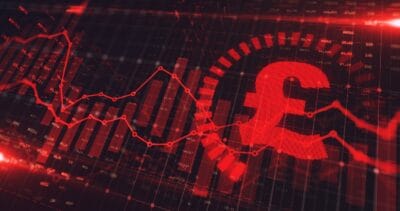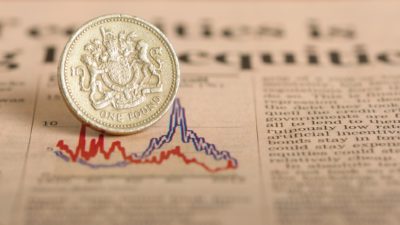When it comes to defensive stocks, utility companies are pretty much in a league of their own. The combination of relatively consistent earnings and chunky dividends has long appealed to investors, particularly those with a low tolerance to risk.
That said, some utilities are more profitable — and consequently more rewarding to shareholders — than others. With this in mind, let’s look at the latest figures from £15bn cap energy provider SSE (LSE: SSE) and ask what impact, if any, today’s update will have on its ability to pay its already sizeable yield.
Return to form?
A cold end to 2016 — and a subsequent rise in consumption — was good news for SSE, even if Britain’s second biggest energy supplier also reported losing 50,000 customer accounts in Q3. As a result, the company stated that it remains on target to “return to growth” and achieve earnings per shares of “at least” 120p for 2016/17 financial year.
Nevertheless, CEO Alistair Phillips-Davies reflected that “volatile wholesale energy market conditions” and reduced levels of renewable energy output mean that SSE’s operating environment continues to be challenging, although less wet and windy weather in November and December did allow the company to make progress with construction projects.
While investors will cheer the prospect of a return to form as far as earnings are concerned — some of which will come from the company’s plans to use £500m from a recent divestment to buy back its shares — it’s SSE’s juicy 6% yield that many will be most concerned about.
As far as dividend growth is concerned, SSE highlighted its commitment to ensuring that its full year payout “keeps pace with RPI inflation“. The company also stated that it would continue to have this target in the years ahead.
Of course, dividends are only sustainable if they are adequately covered by earnings — something that shareholders of SSE will be only too aware of. Over the past few years, cover has dipped to worryingly low levels — 0.62 times in 2015, followed by 0.51 times last year, raising the possibility of a cut.
So it will come as a relief that today’s update reiterated SSE’s expectations from its interim results that dividend cover would range from around 1.2 – 1.4 times until 2018/19, assuming it is able to meet the aforementioned commitment. Based on this, it would seem that dividends at SSE are safe for now.
A better alternative?
Trading on a price-to-earnings ratio (P/E) of 12 for 2017, SSE is less expensive than industry peer Centrica, which is currently on 14. Nevertheless, both companies remain susceptible to political and regulatory scrutiny, which may put some investors off.
If the potential for political meddling concerns you, shares in National Grid (LSE: NG) might be a sound alternative. While the rate of earnings growth at the £35bn cap might not be explosive — with earnings per share growth of 1.5% and 4.3% penciled in for 2017 and 2018 respectively — its status as a solid, dependable dividend payer is rarely questioned. A yield of 4.8% this year rises to 5.5% in 2018, even though cover is expected to dip to 1.27.
Trading on just under 15 times earnings for 2017, shares in National Grid look reasonably priced, even if they are dearer that those of SSE. They’re also quite a bit cheaper than they were in the immediate aftermath of last year’s referendum vote, during which shares in the company shot up almost 16% as investors sought safety in their droves.







